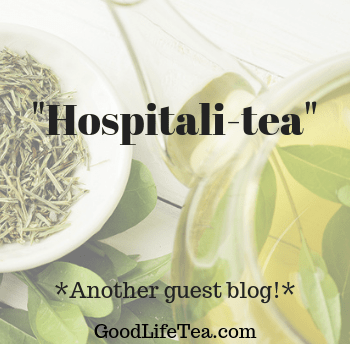
Bonjour beau-tea's! Please enjoy our next installment to our guest blog series! Read on to here about our friend, Nancy Werking Poling's, experiences with Korean tea!
"Hospitali-tea"
By: Nancy Werking Poling
Against a background of muted brown tones, the weathered face of an elderly peasant woman stared directly into the camera. Around her, dark bricks of hardened soybean paste hung from heavy strings attached to the roof of a market stand. The large portrait sensitively captured the spirit and beauty of a woman who survived the trauma of Korea’s twentieth century.
Dr. Cha was the photographer and president of Honam Presbyterian Seminary, Gwongju, South Korea.
Standing beside the picture he bowed deeply before extending his palm to shake hands with my husband and me. “Please be seated,” he said, motioning for us to take our places on opposite sides of a long coffee table. He sat in the leather chair at its end.
“Do you have time for tea?”

Of course we did. We were his guests and felt honored that such an important person was taking time from his busy schedule to meet with us.
From behind an intricately embroidered three-paneled screen, he pulled out a low tea stand, which he situated atop a low table.

“It’s beautiful,” I said, admiring the tea stand’s variegated grains of wood, the artistry of the design.
“Made—how do you say?—made custom for me.” He ran his hand along one of the legs as he might caress a woman’s skin. “Local artist. Wood from ancient tree. I found the wood and took it to him.”
Again reaching behind the screen, he removed a petite gray-green celadon teapot, delicate white cranes painted around it. Three matching diminutive ceramic cups and two cooling bowls completed the set.

Almost reverently Dr. Cha measured tea leaves in the palm of his hand and dropped them into the pot. He poured water from an electric hotpot into one of the cooling bowls, swirling it around, then transferred it to the second bowl before emptying it into the teapot.
“The first time we pay attention to the tea’s fragrance,” Dr. Cha explained.
The scent of the tea hinted of citrus and spring grass after a light rain. The three of us drank from our cups.

Dr. Cha poured more water from the hot pot over the same leaves, allowing them to steep briefly. “This time we pay attention to flavor.”
Simultaneously we all took a sip. Not as strong as the previous round, this cup had a gentle flavor.

A third pouring. “Now we consider color.”
Host and guests all eyed the contents of our individual cups, though I wasn’t sure what hue to look for. My tea was a faint yellow.

As we drank, Dr. Cha, a historian, responded to our many questions about Korea’s past. In accented but fluent English he told of the lives of early missionaries buried beneath mounds on a nearby hillside, some of them founders of a local leprosarium. He described having been present during the Gwongju Uprising of 1980, when dictator Chun Doo-hwan ordered the army to turn its guns on more than 100,000 of the city’s protesting citizens. More than 600 were killed.
Cha in Korean means tea. But Dr. Cha was more than a connoisseur of the beverage. He possessed an eye for beauty and valued ritual. He had the knowledge and experience to chronicle events that have formed his country’s identity.

Nancy Werking Poling has twice spent a semester in Seoul, ROK. She’s author of the non-fiction book, Before It Was Legal: a black-white marriage (1945-1987); a short story collection, Had Eve Come First and Jonah Been a Woman; and a novel, Out of the Pumpkin Shell. She lives in the mountains of North Carolina.
Here are some of our teas at Good Life to experiment with your own tea ritual!
